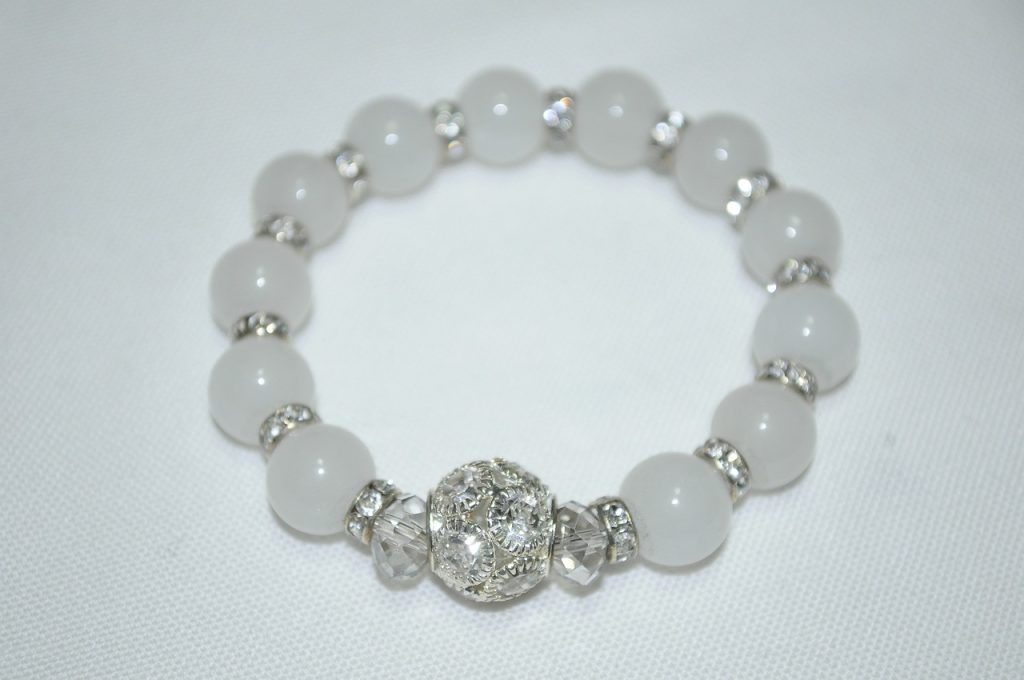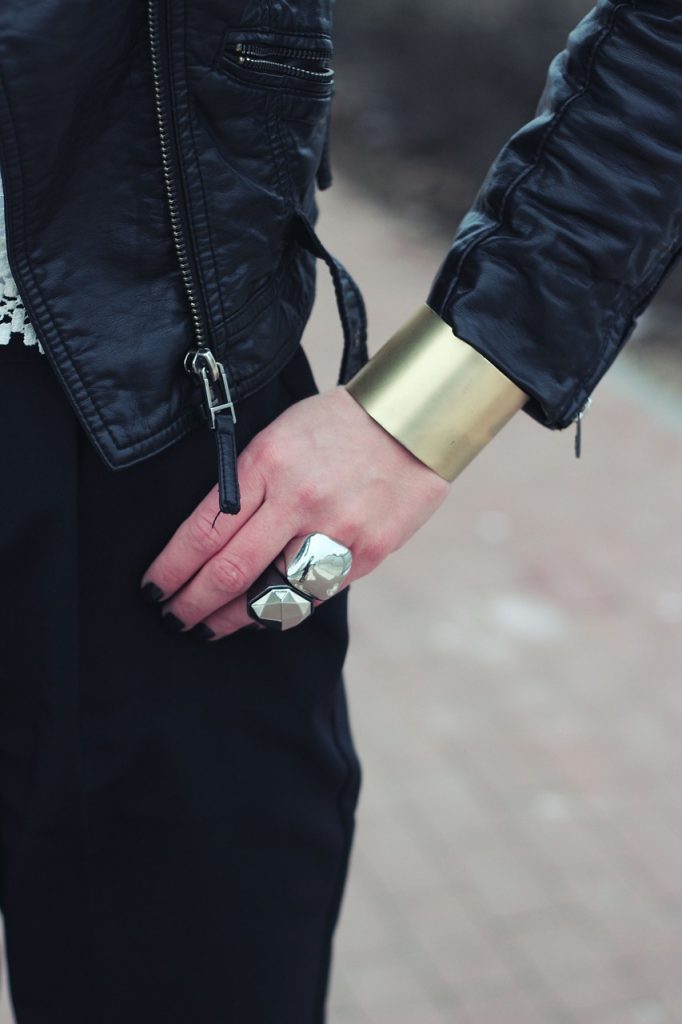Bangles have a rich history that dates back centuries. These beautiful adornments, worn around the wrist, have been a significant part of various cultures across the globe. From their origins in ancient Mesopotamia to their popularity in modern fashion, bangles have evolved and been influenced by different civilizations, resulting in a diverse range of styles, materials, and meanings. Join us on a fascinating journey through time as we explore the captivating history of bangles and uncover the stories behind these timeless accessories.
AKOZLIN Jewelry Box Organizer Functional Leather Jewelry Storage Case for Women Girls Ring Necklace Earring Bracelet Holder Organizer with Mirror Black
$49.99 (as of January 7, 2026 13:40 GMT +00:00 - More infoProduct prices and availability are accurate as of the date/time indicated and are subject to change. Any price and availability information displayed on [relevant Amazon Site(s), as applicable] at the time of purchase will apply to the purchase of this product.)Coward Sunglass Organizer, Beige Velvet Glasses Trays - Eyeglasses Watches Jewelry Display - Men Women (8 Grids)
$18.99 (as of January 7, 2026 13:40 GMT +00:00 - More infoProduct prices and availability are accurate as of the date/time indicated and are subject to change. Any price and availability information displayed on [relevant Amazon Site(s), as applicable] at the time of purchase will apply to the purchase of this product.)pickpiff Jewelry Stand Holder Organizer: 14.5" Sturdy Hanger for 80 Pcs Jewelry, Gift for Women, Gold Jewlery Tower for Necklace, Earring, Bracelet
33% OffSONGMICS 6 LEDs Mirror Jewelry Cabinet, 47.2-Inch Tall Lockable Wall or Door Mounted Jewelry Armoire Organizer with Mirror, 2 Drawers, 3.9 x 14.6 x 47.2 Inches, White UJJC93W
18% OffVicoter Velvet Jewelry Tray 48 Compartments Jewelry Display Organizer with Transparent Cover Rings, Earrings, Necklaces, Pendants Storage Box for Girls, Wives, Mothers, Women
$17.99 (as of January 7, 2026 13:40 GMT +00:00 - More infoProduct prices and availability are accurate as of the date/time indicated and are subject to change. Any price and availability information displayed on [relevant Amazon Site(s), as applicable] at the time of purchase will apply to the purchase of this product.)
Ancient Origins
Prehistoric origins
Bangles have a long and fascinating history that dates back to prehistoric times. Archaeological evidence suggests that as early as 2600 BCE, people in the Indus Valley Civilization were adorning their wrists with bangles made from shells, pottery, and metals. These early bangles were believed to have been used as ornaments and symbols of wealth and status.
Early civilizations’ bangles
As civilization developed, bangles became an integral part of various ancient cultures. In Mesopotamia, present-day Iraq, bangles were crafted from gold, silver, and precious gemstones, showcasing the wealth and power of the wearer. Similarly, in ancient China, bangles were worn to signify social status and to ward off evil spirits. The intricate designs and materials used in these bangles reflected the craftsmanship and creativity of these early civilizations.
Ancient Egyptian bangles
One of the most famous civilizations associated with bangles is ancient Egypt. Bangles were highly valued by the Egyptians and were worn by both men and women as symbols of power, protection, and spirituality. They were often made from materials such as gold, silver, and precious stones. The design of Egyptian bangles ranged from simple bands to intricate pieces adorned with symbolic motifs such as the Ankh, the Eye of Horus, and the Scarab beetle. These bangles not only served as adornments but also held religious and cultural significance in Egyptian society.
Bangles in Different Cultures
Indian bangles
In India, bangles hold immense cultural and religious significance. They are an essential part of a woman’s attire and are worn during various rituals and festivals. Traditional Indian bangles are made from materials like glass, metal, and precious stones, and are adorned with intricate designs and vibrant colors. Different colors and designs are associated with specific occasions and ceremonies, making bangles an integral part of Indian culture.
African bangles
Throughout Africa, bangles have been worn for centuries as adornments and symbols of cultural identity. African bangles are often made from materials found in nature, such as wood, bone, and ivory. They are intricately carved and shaped into unique designs, reflecting the traditional artistry of African cultures. These bangles play a significant role in ceremonies, celebrations, and rituals, symbolizing unity, heritage, and spirituality.
Middle Eastern bangles
Bangles have a rich history in Middle Eastern cultures, particularly in countries like Saudi Arabia, Egypt, and Iran. Middle Eastern bangles, also known as “zar,” are typically made from metals like gold and silver and are adorned with intricate filigree work and gemstones. They are worn by women as a symbol of femininity, beauty, and elegance. Bangles are often given as gifts during special occasions, such as weddings and religious festivals, and are cherished as family heirlooms.
Symbolism and Significance
Religious and cultural symbolism
Bangles hold deep religious and cultural symbolism in many societies. In Hinduism, for example, bangles symbolize prosperity, fertility, and marital bliss. They are believed to bring good luck and protect the wearer from evil spirits. In other cultures, bangles may signify different aspects such as social status, tribal affiliation, or even acts as talismans against illness or misfortune. The significance of bangles varies across regions, but they universally represent a connection to tradition, spirituality, and belief systems.
Ornaments for married women
In many cultures, bangles are particularly significant for married women. They are considered auspicious and are worn as a sign of their marital status. In India, newly married women are often adorned with a set of bangles known as “chooda,” which are made from red and white glass or lac. These bangles are believed to bring prosperity and marital harmony. Similarly, in Middle Eastern cultures, married women often wear bangles as a symbol of their commitment and fidelity.
Protection and good luck charms
Bangles are also thought to provide protection and bring good luck to the wearer. In ancient times, bangles were believed to possess magical powers and were worn to ward off evil spirits and negative influences. Even today, many people believe that wearing bangles can attract positive energy and protect against harm. The belief in the protective and fortunate nature of bangles has contributed to their enduring popularity across different cultures.
Materials Used
Metal bangles
Metal bangles are among the most popular and versatile types of bangles. They can be crafted from a variety of metals such as gold, silver, bronze, and stainless steel. Metal bangles can be plain or intricately designed, engraved, or embossed with patterns or symbols. They are known for their durability and timeless appeal, making them a popular choice for both traditional and contemporary designs.
Glass bangles
Glass bangles have a long history, especially in India and other South Asian countries. They are made by skilled artisans who melt glass rods of different colors and fuse them together to create intricate patterns and designs. Glass bangles are known for their vibrant colors and delicate craftsmanship. They are often worn in stacks, creating a cascading effect that adds a touch of elegance and grace to the wearer’s attire.
Wooden bangles
Wooden bangles have a rustic and earthy charm. They are carved from various types of wood and are often adorned with painted or engraved designs. Wooden bangles showcase the beauty of nature and are popular for their organic and eco-friendly appeal. Their lightweight nature and natural texture make them comfortable to wear and a favored choice for those looking for a more casual and bohemian style.

Evolution of Bangles
Transitions in design and decoration
Over time, bangles have experienced significant transitions in design and decoration. In ancient times, bangles were predominantly simple in design, made from basic materials such as shells or metals. With advancements in craftsmanship and the availability of new materials, bangles began to feature more intricate designs, engravings, and embellishments. From delicate filigree work to elaborate gemstone settings, bangles evolved to become exquisite pieces of wearable art.
Influence of colonization and globalization
The colonization and globalization of different regions influenced the evolution of bangles. The arrival of European settlers in various parts of the world introduced new materials, techniques, and design aesthetics. This led to the fusion of traditional and foreign influences, resulting in bangles that showcased a unique blend of cultural elements. The widespread exchange of goods and ideas through trade routes further contributed to the diversity and innovation in bangle design.
Fashion Trends and Bangles
Bangles in the fashion industry
Bangles have become a prominent fashion statement in the modern era. They are often paired with various styles of clothing to enhance an outfit and reflect personal style. Designers and fashion houses around the world have incorporated bangles into their collections, showcasing their versatility and timeless appeal. From minimalistic and sleek designs to bold and statement-making pieces, bangles continue to be a staple accessory in the fashion industry.
Contemporary designer bangles
Contemporary designers have embraced the art of creating unique and unconventional bangles. They often experiment with innovative materials, shapes, and colors to create pieces that push the boundaries of traditional bangle design. From avant-garde sculptures worn on the wrist to bangles adorned with unconventional elements such as feathers or unconventional materials like recycled plastic, contemporary designer bangles reflect the ever-changing nature of fashion and design.

Social and Economic Impact
Craftsmanship and employment
The production of bangles has become a significant source of employment for skilled artisans in many countries. The intricate craftsmanship required to create bangles provides livelihood opportunities for individuals and communities. The art of bangle-making has been passed down through generations, ensuring the preservation of traditional techniques and knowledge. The demand for bangles not only sustains local economies but also fosters cultural heritage and identity.
Role of bangles in traditional weddings
Bangles play a vital role in traditional weddings in many cultures. They are considered auspicious and are an essential part of the bride’s wedding trousseau. In India, for example, the bride is adorned with a plethora of bangles, which are believed to bless her with marital happiness and prosperity. From glass and metal bangles to intricately crafted gold bangles, these adornments symbolize the start of a new chapter in the bride’s life and are cherished as precious mementos.
Bangles as Art
Bangle artists and exhibitions
Bangles have transcended their functional purpose to become works of art. Talented artists around the world specialize in creating unique and exquisite bangles that showcase their creativity and skill. These artisans often participate in exhibitions and galleries, where their intricate bangle creations are displayed and celebrated. Such exhibitions provide a platform for these artists to showcase their talent and contribute to the appreciation and recognition of bangles as artistic creations.
Bangle installations and sculptures
Bangles have inspired artists to create stunning installations and sculptures that captivate audiences around the world. These larger-than-life installations often incorporate thousands of bangles, interwoven and arranged in intricate patterns to create visually striking works of art. From museum exhibitions to public spaces, these installations leave a lasting impression and serve as a reminder of the cultural and artistic significance of bangles.

Bangle Collections and Museums
Private and public collections
Bangles hold immense value and are often treasured as collectors’ items. Private collectors around the world amass stunning collections of bangles, showcasing the diversity and beauty of these pieces. From historical bangles that date back centuries to modern and avant-garde designs, these collections serve as a repository of bangle heritage and craftsmanship. Public institutions and museums also house significant collections, enabling visitors to appreciate the cultural and historical importance of bangles.
Museums exhibiting historic bangles
There are several museums dedicated to showcasing the history and significance of bangles. These museums exhibit an array of bangles from different cultures, allowing visitors to explore the evolution of bangle design, materials, and symbolism. From ancient Egyptian bangles to tribal African designs, these museums provide a comprehensive insight into the diverse world of bangles and their cultural significance throughout history.
Modern Challenges and Revival
Sustainability issues
In recent years, concerns have been raised about the sustainability of bangle production. The use of certain materials and manufacturing practices can have adverse environmental impacts, such as deforestation or the release of harmful chemicals. However, initiatives promoting sustainable and eco-friendly bangle-making are emerging. Artisans and designers are increasingly utilizing recycled materials and employing environmentally friendly practices to minimize their carbon footprint and ensure a more sustainable future for bangle production.
Initiatives promoting traditional bangle-making
As globalization and mass production pose challenges to traditional crafts, there is a growing movement to revive and promote traditional bangle-making. Organizations and initiatives are working to empower artisans and preserve the unique skills associated with bangle craftsmanship. Through training programs, market access, and collaborations with designers, these initiatives aim to ensure the continuity of traditional bangle-making techniques and support the livelihoods of artisans around the world.
In conclusion, the history of bangles is a testament to their enduring beauty and cultural significance. From their origins in prehistoric times to their present-day presence in fashion and art, bangles have evolved and adapted while remaining a cherished accessory. Whether representing tradition, spirituality, or personal style, bangles continue to inspire awe and admiration across cultures and generations. As we celebrate the rich heritage of bangles, it is important to recognize and support the artisans who bring these exquisite adornments to life, ensuring that this ancient art form thrives for generations to come.


























